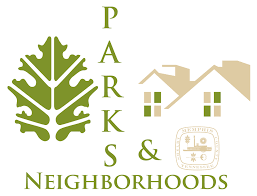From Pacific Standard:
With nearly 2.5 billion materials circulated through more than 16,000 public branches, 2013 was one of the strongest years for libraries in the past decade. And things are looking up.
•
America’s network of public libraries is older than America itself. You can make a strong case that the precursor to our modern book-lending system was developed in Boston in 1636, in Charleston in 1698, by Benjamin Franklin and his Philadelphia cohort in 1731, or in the Massachusetts town that named itself after Franklin in 1790. But what is indisputable is that this “amazing decentralized mutual aid” creation, as one librarian described it, was founded on a radical belief that all citizens have a right to information, art, and literature. That these things are not a luxury, but a necessity, is an idea that turned the old elite concept of private libraries and ivory towers on its head.
Perhaps it’s no surprise, then, that the people locked out of the traditional venues for knowledge are the ones who pioneered the public library. By donating book collections, fundraising for better buildings, and lobbying for political support, women’s clubs around the country were key forces in cultivating public libraries: 75 percent of America’s libraries were started by them on humanistic principles. When the Detroit Public Library was founded in 1865, “our nation was moving from the concept of libraries as storehouses of books—considered as precious physical objects for the use of the few—to the conception of books and libraries as people,” according to Parnassus on Main Street.
America’s public library system got a big push forward when Andrew Carnegie, once the richest man in the world, gave millions to start 1,689 branches nationwide, including the now-oldest library in Washington, D.C., which, according to NPR, “opened in 1903 to women, children, all races — African-Americans remember when it was the only place downtown where they could use the bathrooms.”
In Tulsa, Oklahoma, the central branch of the City-County library has a case worker from the state’s Family and Children Services agency on hand four hours a day, five days a week.
In more recent years, public libraries have not had the benefit of Carnegie-style philanthropy. Across the country, public libraries have been forced to reduce hours, eliminate programs, lay off staff members, and close branches. More libraries are becoming more dependent on volunteer “Friends” groups—but members of these groups tend to age out, without younger people replacing them. Whether you chalk it up to the rise of the Digital Age or a diminished public commitment to shared services and a common wealth, a casual observer might think that American libraries are hopelessly old-fashioned—if not dying altogether.
Ironically, the best-kept secret about America’s libraries is that they are wildly, deeply, and incontrovertibly popular. They are as actively used as ever, if not more.
Funding cuts be damned: more than 16,000 public library branches in the U.S. serve 96.4 percent of the population, according to the “State of America’s Libraries Report 2013” by the American Library Association. (The ALA was founded in 1876, the same year the Dewey decimal system was developed.) Public libraries circulated 2.46 billion materials last year, the greatest volume in 10 years. Over this same period, the circulation of children’s book and materials increased by more than 28 percent. Attendance at library-hosted programs for kids hit 60.5 million in 2013.
But it’s not just for kids: public libraries nationwide hosted 3.75 million public programs, and attendance for those events, too, is growing, indicating, as the ALA report put it, “an increased demand for these services.” Unsurprisingly, public computers at libraries are also in high demand—and libraries have responded by doubling the number available over the last 10 years.
It would be easy to dismiss the ALA as a biased party, but its numbers were confirmed by a study from the Pew Research Center’s Internet & American Life Project, released in December. It reported that 94 percent of 6,200 people surveyed said that a public library in their community improves quality of life. And this is more than just an amorphous endorsement of knowledge and communalism: of those who use their library, 81 percent said that they “provide many services people would have a hard time finding elsewhere.” A full 81 percent said that access to books and other media is somewhat or very important to them—compared to 58 percent of library users who said access to Internet and computer equipment is important.
The assistance of librarians was also cited as important to 76 percent of library users surveyed by Pew. About the same number said that the space of the library itself—as a quiet and safe place—was meaningful to them. All but six percent agreed that “public libraries are a welcoming, friendly place,” and a staggering 91 percent said they personally have never had a negative experience using a public library, either in person or online. Many people—including myself—have personal stories about libraries as deeply meaningful parts of our lives.
By being responsive to the unique needs of their communities, libraries have taken on sometimes surprising roles. In Tulsa, Oklahoma, for example, the central branch of the City-County library has a case worker from the state’s Family and Children Services agency on hand four hours a day, five days a week. In Ann Arbor, Michigan, you can check out musical instruments, microscopes, telescopes, and home tools. In the wake of Hurricane Sandy, New York libraries offered direct assistance to residents who needed help rebuilding. The Sacramento Public Library in California hosts Punk Rock Aerobics, led by one of its librarians. Outside Rochester, New York, you can check out fishing poles. In Dallas, Texas, a public library facilitates Coffee and Conversations, one-hour sessions for the homeless; more than 70 people attended the second meeting. And in Woodbine, Iowa, you can borrow cake pans.
Underscoring just how much an integral part of civic life public libraries are, about 91 percent of Pew respondents said they could point out the one closest to their home. While many of these are in classic Carnegie-era buildings, libraries that are renovating and reconstructing have become community leaders in creative re-use and green building techniques.
This is not to say that Americans who love libraries—nearly all of us apparently—shouldn’t be alert to the threats to those libraries. The recession catalyzed several consecutive years of budget reductions, which in turn were aggravated by the automated federal cuts that came in last year’s sequestration, a particularly big hit to libraries, especially those in schools. With its library threatened by closure in 2012, one city in Michigan was left to host a “Book Burning Party”—a clever hoax that is credited with saving a vital community resource. Eight states don’t give a single penny to public libraries.
Again and again, libraries have been there for us—to the point of becoming almost an invisible part of the civic fabric. Whether through their wealth of books and media or through their fierce agitation against censorship of all kinds (including the well-known Banned Books Week), libraries have stood up for our right to accessible knowledge, art, and literature. In turn, there has never been a better time to vote for a library millage, to volunteer for a “Friends” group, or to attend the regular library board meetings that are open to the public. It’s our moment to stand up for our libraries: to count them as essential to civic life, and to make sure that those making funding decisions in our community know it.



